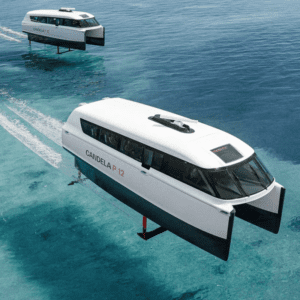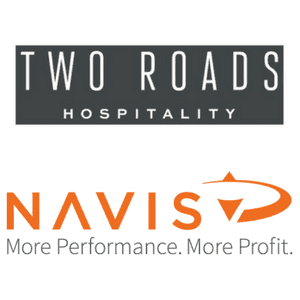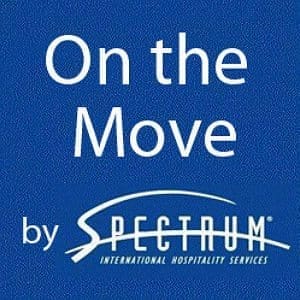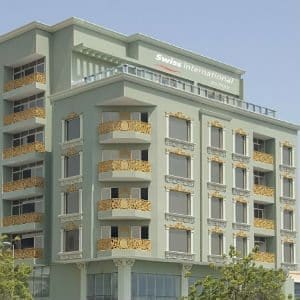As President and COO of Gettys, the interior design, brand design and procurement business that has overseen hundreds of the hospitality industry’s greatest design projects, Andrew Fay has led the Gettys vision through 25 years of growth.
Here we get an insight into how he and the team achieve such great success.
You’re an honours graduate from The Cornell Hotel School, and have years of operational experience in the industry…..how has that helped you in the hospitality design and procurement business?
The hospitality business today is so varied – it includes a whole range of businesses including hotels, casinos, spas, resorts, theme parks and so on – so having an insight into the functionality of the operation is invaluable to the design process.
 At the beginning of my career, the opportunity to work as a management trainee and to undertake formal studies in hotel management provided insights into many facets of the business from both a technical and a practical perspective. This experience allowed me to self-evaluate and to look objectively at the way things work now and how they could possibly work better.
At the beginning of my career, the opportunity to work as a management trainee and to undertake formal studies in hotel management provided insights into many facets of the business from both a technical and a practical perspective. This experience allowed me to self-evaluate and to look objectively at the way things work now and how they could possibly work better.
All businesses need to change and I can use my understanding of hotel operating strategy to create a unique brand experience for our clients without them having to engage a variety of different consultants.
What are some of the current trends in design for the hospitality industry?
?We are tracking a number of design, consumer and guest trends right now impacting work/life integration which we consider as we shape each project.
 Specifically, one trend is how hotels lobbies are becoming more like offices and office lobbies becoming more like hotels. Today our guests expect constant connectivity – they are working more globally, but also more socially. As a result, public spaces have to facilitate this transition and the collaboration between hotelier and design consultant is important to ensure this works for the business as well as for the guest. This trend is extending beyond the mainstream hospitality industry with the owners and developers of office buildings and even hospitals. More and more they are needing to provide spaces that facilitate the comfort of individuals or smaller groups of people in a more relaxed, hospitality-style.
Specifically, one trend is how hotels lobbies are becoming more like offices and office lobbies becoming more like hotels. Today our guests expect constant connectivity – they are working more globally, but also more socially. As a result, public spaces have to facilitate this transition and the collaboration between hotelier and design consultant is important to ensure this works for the business as well as for the guest. This trend is extending beyond the mainstream hospitality industry with the owners and developers of office buildings and even hospitals. More and more they are needing to provide spaces that facilitate the comfort of individuals or smaller groups of people in a more relaxed, hospitality-style.
Globalisation is beginning to effect hotel design in many ways, requiring our professional practice and design approach to be socially responsible and environmentally friendly. Given the growth of the outbound market from China, design needs to be sympathetic to the requirements of those travelers. For example, Chinese consumers truly value balance and harmony in life, something that today’s business traveler struggles to achieve. This can be created by weaving nature throughout spaces from a garden in the lobby, to a resort-inspired bathroom experience featuring natural woods and stones. Additionally, multi-functional business suites which allow travelers to dine, do business and entertain all in one unique location are becoming more prevalent. By incorporating comfortable, natural and locally relevant elements throughout these spaces, Chinese guests can conduct business on their own terms.
What lessons would you like young hoteliers and hotel school students to learn about the design consultation process before they reach a position where they may be a decision maker in such a process?
There are a couple of messages here but possibly the most important is about the initial phases of a project. The earlier the client can have key stakeholders and the design consultant involved – the better. It can be frustrating for all concerned to be well into the project only to find that design solutions and sign-offs are not possible because the decision maker was not part of the development stage and expectations have not been met. Viewing the design team as partners is also vital. This means things like ensuring transparency and keeping them informed, while also using them as a resource. Overall, if everyone is working together to achieve the best possible outcome, it will mean a more successful result with the opportunity for greater innovation.
Gettys has been involved in some pretty awesome projects in the past…what makes a project “sing” for you and the team?
Projects really sing when a dedicated group of stakeholders (Owner, Brand, Architect, Designer, Consultants, Procurement and Construction) come together with a common vision and close collaboration to create something that is greater than any could have done alone. The true art is in how teams orchestrate the design and building of complex projects through seamless communication. Using a musical reference is appropriate because the best projects use a variety of “notes” to create a beautiful masterpiece. As with any great piece of music, the best hotel designs have moments that surprise and delight to create memories for the guest.
What would you like people to think when they hear the name Gettys and the role that you and your team play in the hospitality industry?
As innovative thought leaders, who create value in hospitality real estate through the application of our design, procurement and branding services along with strategic thinking. We do this by never losing sight of the end user – our clients’ customers – to ensure the viability of our solutions. I’d also like them to think of our team as highly collaborative and able to balance both left and right brain thinking, delivering on aesthetic, economic and brand expectations.
What can you tell us about the H.O.T. (Hotel Of Tomorrow) Project and how it is driving futurism and thought leadership in the hospitality industry
We launched the H.O.T. Project ten years ago based on our philosophy that industry innovation starts with insight, plus collaboration. It was a think tank designed to envision the future of the hospitality industry. We included hotel brands, owners, design consultants, artists, manufacturers, media, students and many others.
The H.O.T. Project has become a foundational catalyst for our Gettys Group methodology. We track trends, orchestrate ideation sessions and events, and integrate varied viewpoints into each of our projects.
Images (from top): Le Meridien Lobby, Le Meridien Private Dining, Visun Villas Show VIlla, Jumeirah Beach Washroom, Epicurean Hotel Lobby.
About the author
Timothy Millett’s training roles have seen him deliver programs across Australia, Asia, Europe, Africa and America ensuring cultural sensitivity as well as a broad base of experience in lecturing, teaching and training.
A graduate of the Ecole Hôtelière de Lausanne, Switzerland, his hospitality career spans management and director positions in Front Office, Guest Relations, Public Relations, Food & Beverage and Training with organisations including the Regent of Melbourne, The Mandarin Oriental Hotel Group and Mövenpick Gastronomy. He was also a founding staff member of the internationally renowned Blue Mountains International Hotel Management School in Australia.
Tim is currently the Director of Training and Development at iperform, an organisation that specialises in Sales and Service, Leadership and Effective Personal Organisation programs.













